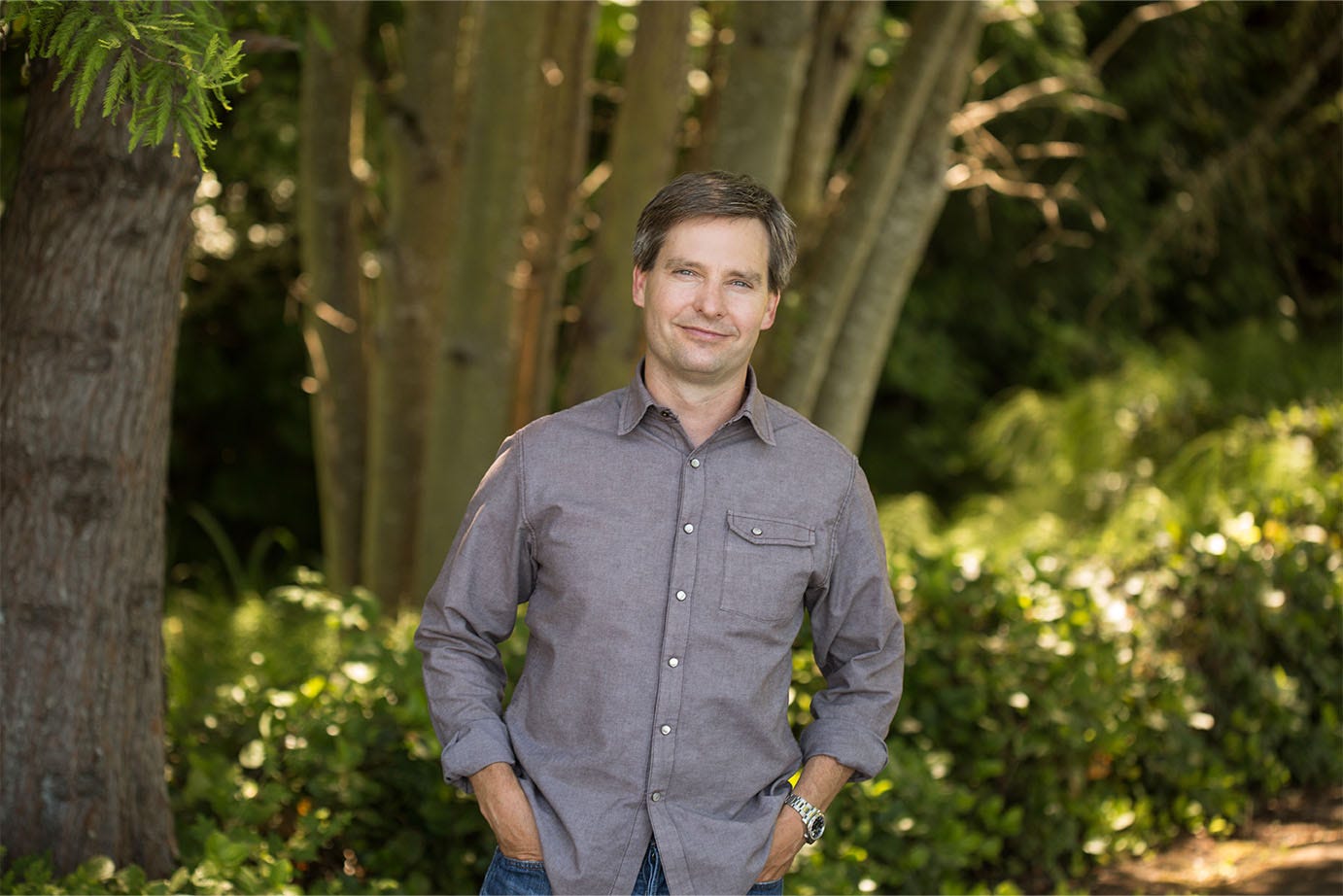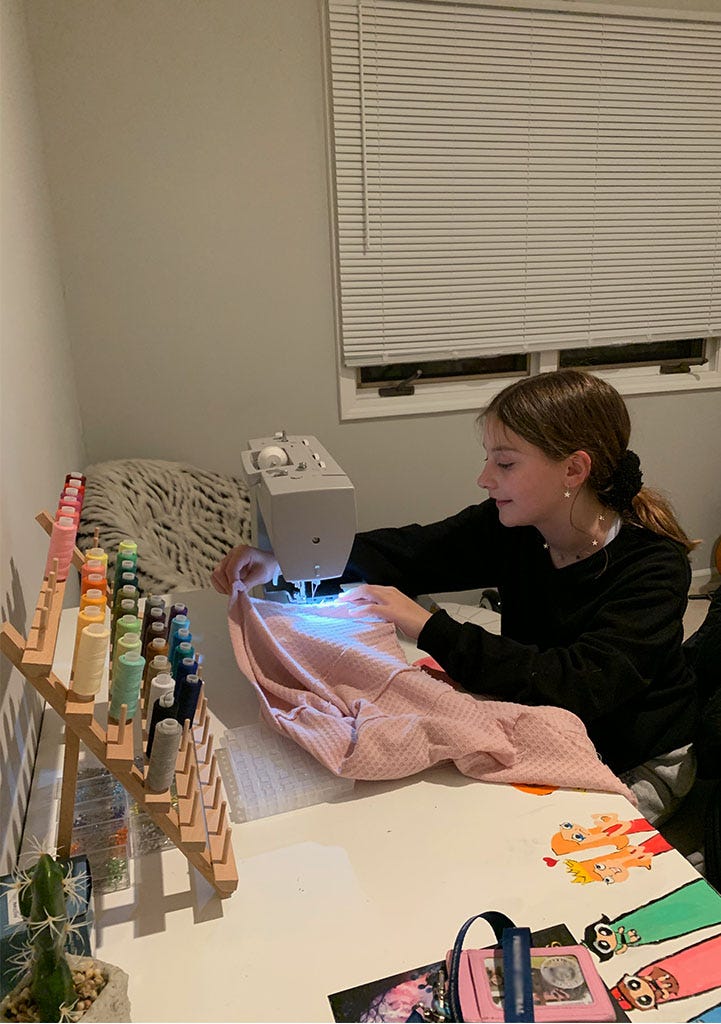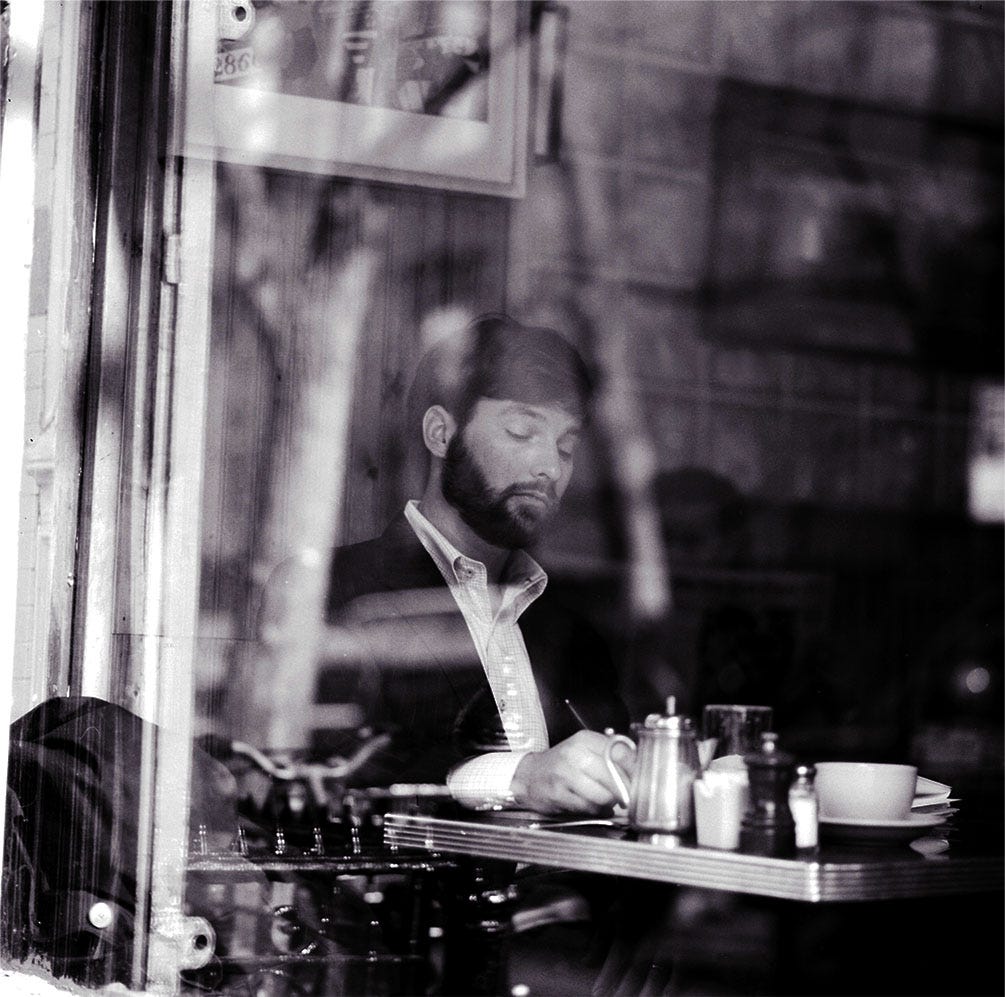How I Write History: Or, A Window into My Crazy
A personal profile about quilt-making, research, and structuring narrative non-fiction
Since I intend to burrow into the work/craft of others, I thought it fair only to turn the gaze inward and allow readers to understand how I write my books. Here’s an autobiographical piece.
I don’t know how to sew. Nor does my wife. By fate, we were handed a daughter (let’s call her Martha) who loves to knit and sew. Yes, she is an old lady masquerading as a young teenager. After Santa delivered a brand-new sewing machine through the chimney, the metaphor “threading the needle” never rang so true. I wanted to toss the whole contraption into the fire by day’s end. Months later, Martha is into quilt-making, something my mother and grandmother did before her. Remembering them, watching my own daughter lately, I was struck by how much the assembly and structuring of my narrative non-fiction books resembles their craft.
The Collection
Growing up, I spent a fair amount of time in fabric stores, following my mother down aisles spilled over with bolts of fabric. For hours, she would hunt for the right patterns and colors for her newest quilt. The beginning of any project was one of collection. For me, it is the same, whether I am investigating the history of the first individual to break the four-minute mile (The Perfect Mile) or the spies on skis who sabotaged the Nazi atomic bomb program (The Winter Fortress).
The library is my starting point. I read every book on my new subject. I copy their bibliographies, then read the books, newspaper/magazine articles, and other materials these authors sourced. Steadily, over scores of books, I slowly become an expert on the subject (Russia 1905, for instance, for Red Mutiny) and in the process, assemble a huge inventory of material. Eventually, I reach a point, months later often, where I essentially know what others know or have interpreted—and these secondary sources provide an excellent base from which I can advance into primary research.
A sidenote on libraries first. Like a good, independent fabric store, I love open stack libraries, usually found in universities. Search engines and databases are wonderful tools, but they lack the opportunity to stumble upon something one might not even have realized they needed. In researching the Art Deco period at Columbia University’s superb architecture library, I recall coming across some bound volumes of an out-of-print magazine called Pencil Points. Curious, I began thumbing through the pages from 1928-29 and discovered a rare profile of one of the lead individuals in my story.
From the open stacks of the library shelves, I move to institutional and personal archives. There's nothing like first-hand material: letters, diaries, secret documents, unpublished memoirs, and scrapbooks can unveil a story and go to the heart of the individuals who experienced such great events. Again, I don't reinvent the wheel if it is not a must. I'll first investigate papers referenced in other books, but then use those to dive deeper, looking for treasure. I'm searching for facts, color, stories, and details that have never been found--and sometimes hidden on purpose.
This research is very much detective work. One reads of a bit player, call him Helder in a history of a great escape of WWI pilots from a prison camp. You look up this individual in the British archive—and elsewhere. Nothing. You Google the name, find a single reference in the source notes of a long out-of-print book in an archive in Canada. You track this down, but it’s a couple of letters to a woman in Ontario, call her Sue Jacobs. You hope they are married, but no. This is when the obsessive crazy takes over (very necessary). You run a genealogical search for Sue. A grandson turns up. You can’t find any contact information except a Facebook account. You write. He offers to talk on the phone. In the conversation, you discover his grandmother donated her diaries and letters from WWI to a local library. You go to the library. Two big folders come to you. Inside, dozens of letters from Helder, describing prison life, describing the key role he played in helping the pilots escape. Gold.
As any good historian or journalist knows, these stories are real but few and far between. While following the trail of Nazi war criminals in Argentina (for Hunting Eichmann), I was led into a warehouse with paper bursting out of thousands of moldy boxes stacked to the rafters. There was no index, simply "good luck". From this, and other research, I discovered the passport Adolf Eichmann used to escape Europe at the end of WWII. In Russia, I had to maneuver a labyrinth of bureaucrats and political roadblocks to enter naval archives in St. Petersburg that had not seen an American in ages. My travels for primary source material have taken me from small towns to big cities, from Lawrence, Kansas and Rjukan, Norway to Berlin, London, Buenos Aires, Washington DC, Melbourne, and Odessa.
Some of my best finds have come from families who have stored historical treasure in trunks or bound volumes that have rarely, if ever, been published. For The Winter Fortress, my history of the Norwegian patriots who sabotaged the German atomic research program, I benefited from one of the finest personal archival collections I have ever seen. One of the heroes of this story was Leif Tronstad, a brilliant scientist. He spied on the Germans after their occupation of Norway, and when exposed, he escaped to London to lead the missions against the heavy water plant at Vemork that supplied the critical ingredient to the Nazi's efforts. Tronstad had rarely been written about in these histories, yet from the diaries and secret documents his son assembled in many volumes of black binders, the truth of Leif’s essential role in these events—and their impact on him personally--was very clear. Further, his son provided personal letters written between Leif and his family during the war that revealed so much of his interior life.
Archival documents can only be bested by personal interviews. In my history of the skyscraper wars in New York in the 1920s (Higher), I was not able to interview any of the central figures or key witnesses as they were long since deceased, and to be frank, my lead characters lacked depth because of it. With my next The Perfect Mile, I enjoyed long one-on-one interviews with the three runners battling to break the record. I remember interviewing the American Wes Santee while he was driving through a graveyard. Crying, he told me of his troubled youth, of the circumstances he endured from an abusive father that fueled his drive to be the world's best miler. I'll never forget the Mossad agent who spoke of his dangerous overseas activities as if he was recounting a trip to the dry cleaner. These moments reveal a person and make it possible for them to spring to life on the page.
And sometimes, these interview/research expeditions are just plain fun, too, like learning to cross-country ski and live in snowbound cabins in the Norwegian wild, retracing the steps of the saboteurs themselves. There was nothing like being in the scene of the story (even wearing one of the saboteur’s gear, including his long underwear) to understand what they endured in advance of the mission: a winter where legend spoke of it growing so cold, so fast that flames froze in fires.
There comes a point when the collecting is done. As for when there’s no fast rule. One could arguably search a lifetime for tidbits on a single story, same as a quiltmaker could continue to hunt and collect fabric with that perfect pattern or color. For me, I stop when I’ve crossed off every primary and secondary source on my wish list (which grows throughout the assembly process) and feel in my gut that I have multiples more material than I could ever include in a book. For me, this is typically a two-year process.
The Sorting & Structuring
At the moment I write this essay, the kitchen table in my house is a pile of fabric, some cut into squares, some still in rolls, others fragments. There are patterns of floral, chevrons, zigzags, and flywheels. There’s ivory green, black and white, periwinkle blues, and pink. Lots of pinks. Most of the fabric is cotton, but there’s some linen there, and something called Voile. I do not know what this is but it feels like silk. My daughter Martha could sit at this table for hours, sorting and envisioning how her quilt would look, but she’s a kid and so she sometimes haphazardly begins. My grandmother was much more rigorously organized in her efforts. Before she ever brought fabric to the sewing machine, she knew every piece of material she would use, what shape they would be cut, and how they would be put together. The beautiful and intricately symmetrical quilts she made reflect this attention to detail and process.
Once I’ve gathered my mountains of research for a book, I follow a similar process. My method may not call to mind Kerouac or Hemingway, of mad-eyed geniuses toiling in Parisian garrets, but it works for me. Every book is broken down into pages of interest and brief summaries of what they contain (for instance: Battle for Norway, p.88 – attack in Trondheim where Leif Tronstad lived). Same for every interview, diary, and private letter. By the end, I have a monster file, thousands of summary lines in Excel of what I’ve uncovered in my research—and where it exists on my computer, bookshelves, or file cabinets. Glamorous, it is not. Supremely useful, yes

.
Then I repeatedly read over this file until these summaries swim and coalesce into rough order in my head. I take notes on timelines, key subjects that need their own mini-histories, and essential characters that need fleshing out. Afterward, I put it away…and go away. Far from my desk. Far from my house, if the family allows. A beach. A mountain. A hideaway in the woods—anything to unwind, free me from the swirls of research. When I return, I sit down, notebook in hand, old school, and hatch out the structure of my book with no computer in sight.
John McPhee, the New Yorker writer and master of structure, speaks of how he breaks down many of his stories into an ABC/D format. I won’t dare explain but read him. He is a genius. Mine is a more simplistic and no doubt inspired by an amalgam of grade school English instruction, screenplay theory, Aristotle’s Poetics, and a lifetime of reading both bad manuscripts and great novels and histories.
I start with what is the book’s beginning, middle, and end (let’s call it B/M/E—McPhee watch out). Then I break down the “Beginning” into its own B/M/E, including what characters and backstory need to be introduced as well as what is the driving momentum of the narrative that leads into the core of the story. This “Middle” is divided with the same B/M/E, focused primarily on what forces the characters affect and are affected by, how the characters develop (change) to match these challenges, and what is the leap they need to take that moves them toward the “Ending”. Again, in this third stage, B/M/E, with a heavy bent toward action and narrative drive to a rousing conclusion. Since I write fact, not fiction, this structure needs to adhere to the truth and a certain chronology, but with the right interplay between various lead individuals in a history, the construct usually works.
Once I have these breakdowns, I structure them into chapters—and even sections within chapters (for instance: Saboteurs sneak into the German guard plant at night, climbing a cliffside. This could be Chapter 14, section 2—or 14.2). Stay with me here. Almost done. Then, once I’ve hashed this out, I sit on it again, and make some revisions, then I’m ready to finish the sorting. Every line of my Excel file gets a number for where this research would best fit into the book. If it’s an oral history interview with one of my saboteurs of almost slipping during the climb of the cliff, the line receives a 14.2. Over weeks, I assign all my research to a spot in the book. There are even subheadings for characters and subject matter, but I believe I’ve offered enough of a window into my crazy.
When finished with this phase and the time comes to write (and boy, am I ready to write at that point), then I look at my chapter breakdown, prompt my Excel file to spit out all the references I need to read before launching into Chapter 1, section 1, and off I go.
Part inspiration, part preparation, I am a writer as a quiltmaker. Perhaps one day, I’ll even learn to sew too. To learn more about my books, here’s my author website www.nealbascomb.com







Neal, that is impressive. I would say that I follow you on the research piece, and conduct my work similarly. But you lost me with excel! I approximate that (sort of?) in various Google docs, where I organize notes on secondary and primary materials, but in an admittedly much more haphazard way. As a result, I sometimes forget about some piece of research that I had dug up months earlier, and never incorporate. I wish I were as systematized as you! Would you consider sharing a screenshot of an excel sheet? Thank you for sharing!! Julie
This is such a wonderful blend of personality, legacy, and craft.